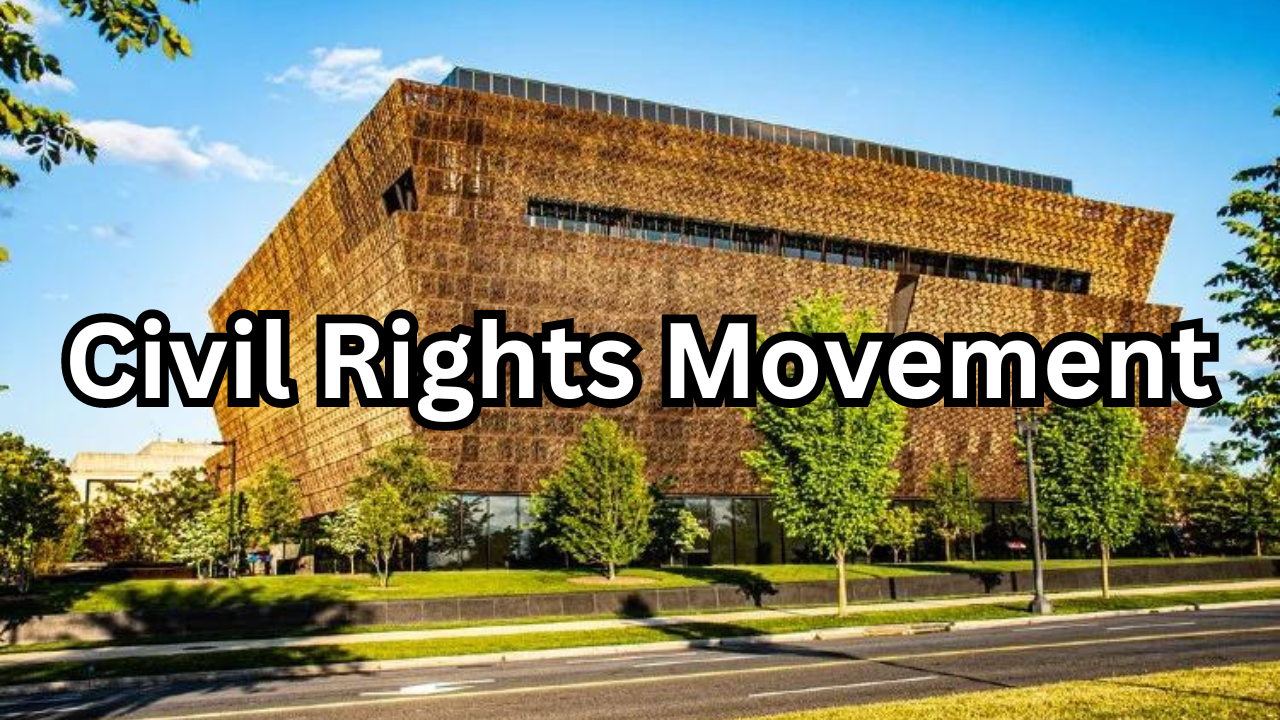Table of Contents
Introduction
The Civil Rights Movement was a pivotal era in American history, marked by courageous efforts to end racial segregation and ensure equal rights for all citizens. This transformative period, spanning from the 1950s through the 1960s, saw countless individuals and groups fighting against systemic injustice and discrimination. Visiting historical sites associated with this movement offers a profound way to understand the struggles, sacrifices, and triumphs that shaped the quest for civil rights.
These iconic locations serve as powerful reminders of the past and as educational tools for the present and future. They provide visitors with an opportunity to engage deeply with the history of the Civil Rights Movement, reflect on the progress made, and recognize the ongoing challenges in the pursuit of equality. Exploring these sites not only honors the legacy of those who fought for justice but also inspires continued commitment to advancing civil rights for all.
Brief Overview of the Civil Rights Movement and Its Significance
The Civil Rights Movement, which gained momentum in the mid-20th century, was a social and political campaign aimed at ending racial segregation and discrimination against African Americans. The movement’s roots can be traced back to the early 20th century, but it was during the 1950s and 1960s that it achieved significant visibility and impact. Central to the movement were key figures such as Martin Luther King Jr., Rosa Parks, Malcolm X, and many others, who led efforts to challenge and dismantle the systemic injustices embedded in American society.
The significance of the Civil Rights Movement lies in its profound impact on American laws, culture, and society. Landmark achievements such as the Civil Rights Act of 1964 and the Voting Rights Act of 1965 were instrumental in dismantling institutional racism and ensuring greater legal protections for African Americans. The movement not only transformed the socio-political landscape but also set a precedent for subsequent social justice efforts, influencing various human rights struggles around the world.
Importance of Visiting Historical Sites to Understand and Honor This History
Visiting historical tour sites related to the Civil Rights Movement provides a tangible connection to the past, offering a deeper understanding of the struggles and victories that shaped modern America. These sites, such as museums, memorials, and landmarks, serve as educational resources that bring history to life through personal stories, artifacts, and interactive exhibits. They help visitors grasp the emotional and social context of the movement, fostering a greater appreciation for the sacrifices made by those who fought for justice and equality.
Moreover, these visits offer an opportunity to honor the legacy of civil rights leaders and activists, ensuring that their contributions are remembered and celebrated. Engaging with these sites also encourages reflection on the progress achieved and the ongoing challenges in the fight for racial and social justice. By connecting with this history in a meaningful way, visitors can gain a renewed sense of commitment to continuing the work of building a more equitable society.
National Civil Rights Museum (Memphis, TN)
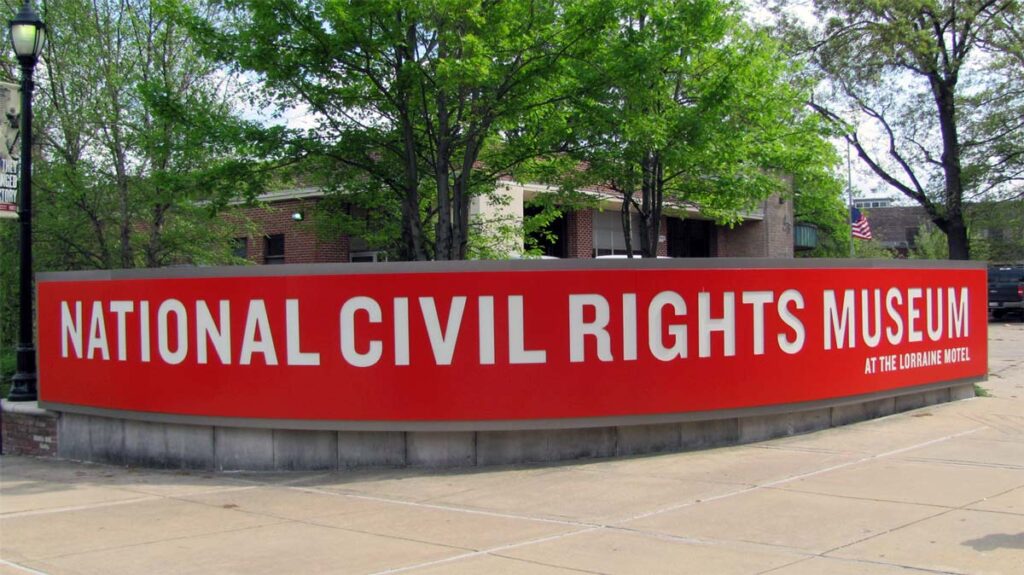
The National Civil Rights Museum, located in Memphis, Tennessee, stands at the historic Lorraine Motel, the site where Dr. Martin Luther King Jr. was assassinated on April 4, 1968. This museum is a cornerstone in the preservation and education of Civil Rights history, offering visitors a profound insight into the struggles, triumphs, and ongoing challenges of the movement.
Historical Background
The Lorraine Motel, which was originally a lodging establishment in the heart of Memphis, became a focal point of American history when Dr. King was tragically shot while standing on its balcony. The decision to convert this location into a museum was driven by the desire to honor Dr. King’s legacy and to provide a space for reflection and education about the Civil Rights Movement.
Exhibits and Key Features
The museum’s exhibits span the breadth of the Civil Rights Movement, from its origins to its far-reaching impact. Visitors can explore detailed displays on key events, such as the Montgomery Bus Boycott and the Selma marches, as well as hear personal testimonies from those who lived through these pivotal moments. Interactive exhibits and multimedia presentations provide a dynamic experience, allowing visitors to engage with the history in a meaningful way.
A significant feature of the museum is the preserved room where Dr. King was staying, which has been restored to its appearance on the day of his assassination. This powerful space offers a poignant reminder of the personal sacrifices made by those involved in the movement.
Significance
The National Civil Rights Museum plays a crucial role in preserving the legacy of Dr. King and the broader Civil Rights Movement. It serves not only as a memorial to those who fought for justice but also as an educational center that fosters understanding and dialogue about race, equality, and social justice. Through its comprehensive exhibits and educational programs, the museum continues to inspire visitors to reflect on the progress made and the work still needed to achieve true equality.
The 16th Street Baptist Church (Birmingham, AL)
The 16th Street Baptist Church in Birmingham, Alabama, is a deeply significant site in the history of the Civil Rights Movement. Known for its tragic past and its role as a beacon of hope and resistance, this church has become a powerful symbol of the struggle for racial equality.
Historical Background
The 16th Street Baptist Church gained national attention on September 15, 1963, when a bombing orchestrated by members of the Ku Klux Klan killed four young African American girls—Addie Mae Collins, Denise McNair, Carole Robertson, and Cynthia Wesley. The attack, which injured more than 20 others, was a direct response to the growing Civil Rights Movement and a grim reminder of the violent opposition faced by those advocating for change.
Role in the Civil Rights Movement
Before the bombing, the 16th Street Baptist Church was a central meeting place for civil rights activists. It served as a strategic location for organizing protests and marches, including those related to the Birmingham Campaign, which aimed to desegregate the city. The church’s role as a gathering spot made it a target for those opposed to the movement, reflecting the intense resistance to civil rights progress in Birmingham.
Current Status and Preservation Efforts
Today, the 16th Street Baptist Church is a National Historic Landmark and a site of profound historical significance. It operates as both a place of worship and a museum, with exhibits dedicated to the Civil Rights Movement and the tragic events of the 1963 bombing. The church provides educational programs and community events that honor the legacy of the victims and the broader struggle for civil rights.
Visitors to the church can view the historical exhibits, attend services, and participate in educational activities that explore the impact of the bombing and the ongoing fight for racial justice. The church’s preservation ensures that the memory of the four girls and the broader movement’s achievements are maintained for future generations.
Significance
The 16th Street Baptist Church stands as a poignant reminder of the brutality faced by civil rights activists and the resilience of those who continued to fight for justice despite such violence. The church’s history underscores the importance of confronting and remembering the past to understand the progress made and the work still needed to achieve full equality.
Selma to Montgomery National Historic Trail (AL)
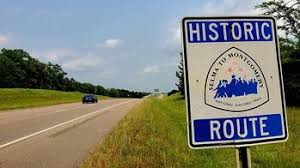
The Selma to Montgomery National Historic Trail in Alabama is a significant route that traces the path of one of the most pivotal events in the Civil Rights Movement: the marches for voting rights in 1965. This trail not only commemorates the struggle for racial equality but also serves as a powerful symbol of the relentless pursuit of justice.
Historical Background
The Selma to Montgomery marches were a series of three protest marches held in 1965 to advocate for voting rights for African Americans. The first march, known as “Bloody Sunday,” took place on March 7, 1965, when peaceful protesters were brutally attacked by law enforcement officers on the Edmund Pettus Bridge in Selma. The second march occurred on March 9, when demonstrators turned back after a symbolic crossing of the bridge. The third and successful march began on March 21 and culminated in Montgomery on March 25, with thousands of participants arriving to demand voting rights.
Key Sites Along the Trail
- Edmund Pettus Bridge (Selma, AL): The site of the infamous “Bloody Sunday” attack, the bridge is a central landmark of the trail. It is a powerful symbol of the struggle for voting rights and is visited by thousands annually to reflect on the events of that day.
- Selma Interpretive Center: This center provides an overview of the marches and their significance, offering exhibits, multimedia presentations, and educational programs about the events in Selma and their impact on the national movement for voting rights.
- Lowndes County Interpretive Center: Located in White Hall, this center highlights the role of Lowndes County in the Civil Rights Movement, focusing on local activism and the broader context of the voting rights struggle.
- State Capitol (Montgomery, AL): The final destination of the marches, the Alabama State Capitol is where Dr. Martin Luther King Jr. delivered his famous “How Long, Not Long” speech. It symbolizes the achievement of the marchers’ goals and the ongoing quest for equality.
Significance
The Selma to Montgomery National Historic Trail serves as a living testament to the courage and perseverance of those who fought for voting rights and social justice. By following the trail, visitors gain a deeper understanding of the historical context and the personal sacrifices involved in the struggle for civil rights. The trail not only preserves the memory of these pivotal events but also educates and inspires new generations to continue the work of advancing democracy and equality.
The Rosa Parks Museum (Montgomery, AL)
The Rosa Parks Museum, located in Montgomery, Alabama, is dedicated to the life and legacy of Rosa Parks, a pivotal figure in the Civil Rights Movement. This museum offers a comprehensive look at Parks’ role in sparking the Montgomery Bus Boycott and her broader contributions to the struggle for racial equality.
Historical Background
Rosa Parks is often hailed as “the mother of the Civil Rights Movement” for her courageous act of defiance on December 1, 1955. On that day, Parks, an African American seamstress, refused to give up her seat to a white man on a segregated bus in Montgomery. Her arrest for this act of resistance ignited the Montgomery Bus Boycott, a 381-day mass protest that ultimately led to the desegregation of the city’s buses and became a significant moment in the Civil Rights Movement.
Exhibits and Key Features
The Rosa Parks Museum is situated on the campus of Troy University Montgomery, where it serves as both a historical site and an educational center. Key features of the museum include:
- Rosa Parks’ Refusal: A detailed exhibit that recreates the pivotal moment of Parks’ defiance, including historical artifacts and multimedia presentations that provide context and personal insights into her experience.
- Montgomery Bus Boycott: Exhibits that explore the broader impact of the boycott, featuring stories of the activists involved, the challenges they faced, and the movement’s success in challenging segregation.
- Educational Programs: The museum offers a variety of educational programs and workshops aimed at students, educators, and the public. These programs delve into topics such as civil rights history, social justice, and the ongoing relevance of Parks’ legacy.
- Rosa Parks Collection: The museum houses a collection of personal artifacts and memorabilia related to Rosa Parks’ life, including photographs, letters, and other significant items that highlight her role in the movement and her post-boycott life.
Significance
The Rosa Parks Museum is a vital institution for understanding and honoring the legacy of Rosa Parks and the Montgomery Bus Boycott. By preserving and interpreting this crucial chapter in American history, the museum provides visitors with a deeper appreciation of Parks’ bravery and the broader struggle for civil rights. It serves as a reminder of the power of individual acts of resistance and the collective efforts required to achieve social change. Through its exhibits and educational initiatives, the museum continues to inspire new generations to uphold the principles of justice, equality, and nonviolent protest.
Martin Luther King Jr. National Historical Park (Atlanta, GA)
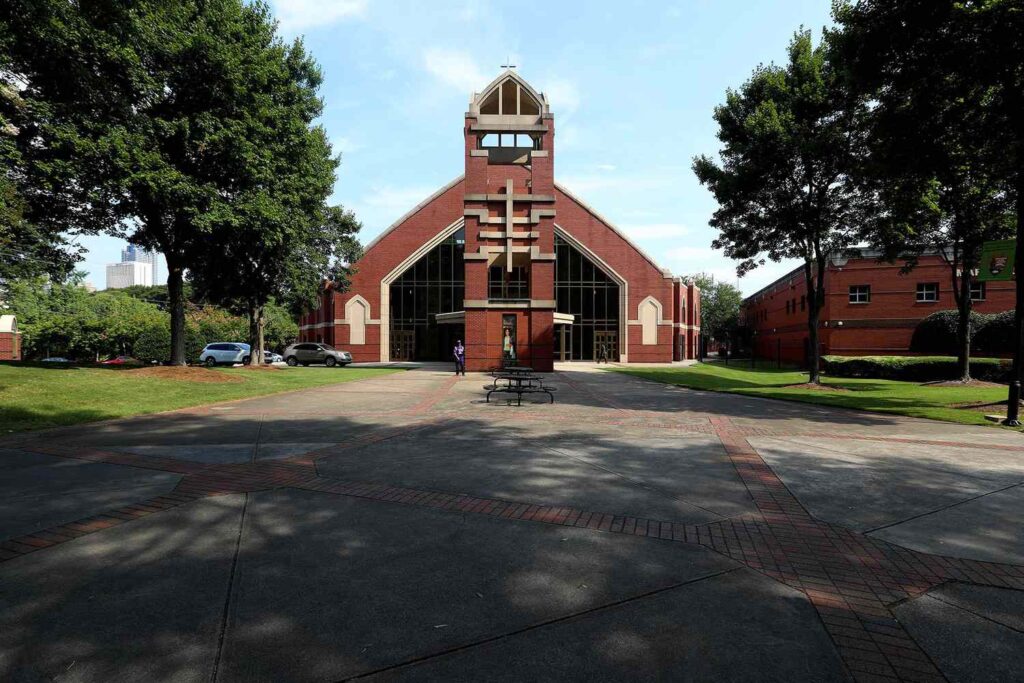
The Martin Luther King Jr. National Historical Park in Atlanta, Georgia, is a profound tribute to the life and legacy of Dr. Martin Luther King Jr., one of the most influential leaders of the Civil Rights Movement. This park encompasses several key sites that provide a comprehensive view of Dr. King’s contributions to social justice and his enduring impact on American society.
Components of the Park
- Dr. King’s Childhood Home:
- Overview: The house where Dr. Martin Luther King Jr. was born and spent his early years. This well-preserved home offers a glimpse into his formative years and family life.
- Significance: Provides visitors with an understanding of Dr. King’s upbringing and the environment that shaped his values and commitment to civil rights.
- Ebenezer Baptist Church:
- Overview: Dr. King’s place of worship and where he served as co-pastor with his father, Martin Luther King Sr. The church is a central site for understanding Dr. King’s religious and moral convictions.
- Significance: The church was a major center for civil rights organizing and serves as a living memorial to Dr. King’s faith and leadership.
- The King Center:
- Overview: Established by Coretta Scott King, Dr. King’s widow, the center houses the Martin Luther King Jr. Center for Nonviolent Social Change and includes a variety of exhibits and archives.
- Significance: This facility promotes Dr. King’s philosophy of nonviolence and offers educational resources about his life and work.
- Dr. King’s Final Resting Place:
- Overview: Located at the King Center, the final resting place of Dr. King and his wife, Coretta Scott King, is a solemn site for reflection and remembrance.
- Significance: A place for visitors to pay their respects and reflect on the lasting impact of Dr. King’s legacy.
Historical Significance
The Martin Luther King Jr. National Historical Park is not just a collection of landmarks but a cohesive narrative of Dr. King’s journey from a young boy in Atlanta to a global leader in the fight for civil rights. The park illustrates his transformation and the broader context of his activism, offering valuable insights into the struggles and triumphs of the Civil Rights Movement.
Visitor Experience
Visitors to the park can explore the historical sites through guided tours, educational programs, and interactive exhibits. The park’s resources provide a rich, immersive experience that enhances understanding of Dr. King’s impact and the ongoing relevance of his message of equality and justice.
Significance
The Martin Luther King Jr. National Historical Park serves as a vital space for honoring Dr. King’s contributions and educating the public about his legacy. By visiting the park, individuals gain a deeper appreciation for Dr. King’s vision of a just and equitable society and are inspired to continue his work through active engagement in social justice and community service.
The African American Museum in Philadelphia (PA)
The African American Museum in Philadelphia (AAMP) stands as a prominent institution dedicated to preserving and celebrating the rich cultural heritage and historical contributions of African Americans. Located in Philadelphia, Pennsylvania, the museum plays a crucial role in highlighting the diverse experiences and achievements of African American communities.
Overview
Founded in 1976, the African American Museum in Philadelphia was the first museum of its kind in the U.S. It was established to provide a comprehensive exploration of African American history and culture, serving as a vital educational resource and cultural hub for both the local community and visitors from around the country.
Exhibits and Key Features
- Permanent Exhibits:
- The Story of the African American Experience: This exhibit covers the history of African Americans from the transatlantic slave trade to the present, detailing significant events, figures, and movements that have shaped the community’s history.
- Cultural and Artistic Displays: Features a wide range of artifacts, artworks, and multimedia presentations that reflect the rich cultural heritage and creative expressions of African Americans.
- Temporary Exhibits:
- Rotating Exhibitions: The museum regularly hosts temporary exhibits that explore various aspects of African American life, including art, music, literature, and social issues. These exhibits provide fresh perspectives and highlight contemporary issues and achievements.
- Educational Programs:
- Workshops and Lectures: The museum offers a variety of educational programs, including workshops, lectures, and panel discussions, aimed at deepening understanding of African American history and culture.
- Youth and Community Outreach: Programs designed for students and community members foster engagement and learning about African American history and cultural contributions.
- Research Library and Archives:
- Collection of Documents and Artifacts: The museum’s research library and archives house a wealth of historical documents, photographs, and artifacts related to African American history. These resources support scholarly research and public interest in African American heritage.
Significance
The African American Museum in Philadelphia serves as an important cultural and educational institution that honors the achievements and experiences of African Americans. It provides a platform for exploring the complexities of African American history and culture while promoting dialogue and understanding.
Visitor Experience
Visitors to AAMP can engage with its diverse exhibits, participate in educational programs, and explore the museum’s extensive archives. The museum’s dynamic approach to storytelling and education creates an enriching experience that highlights the ongoing impact of African American contributions to society.
Conclusion
The African American Museum in Philadelphia plays a vital role in preserving and promoting the history and culture of African Americans. Through its comprehensive exhibits, educational programs, and community outreach, the museum fosters a deeper appreciation of African American heritage and encourages continued dialogue about race, identity, and social justice.
The Freedom Center (Cincinnati, OH)
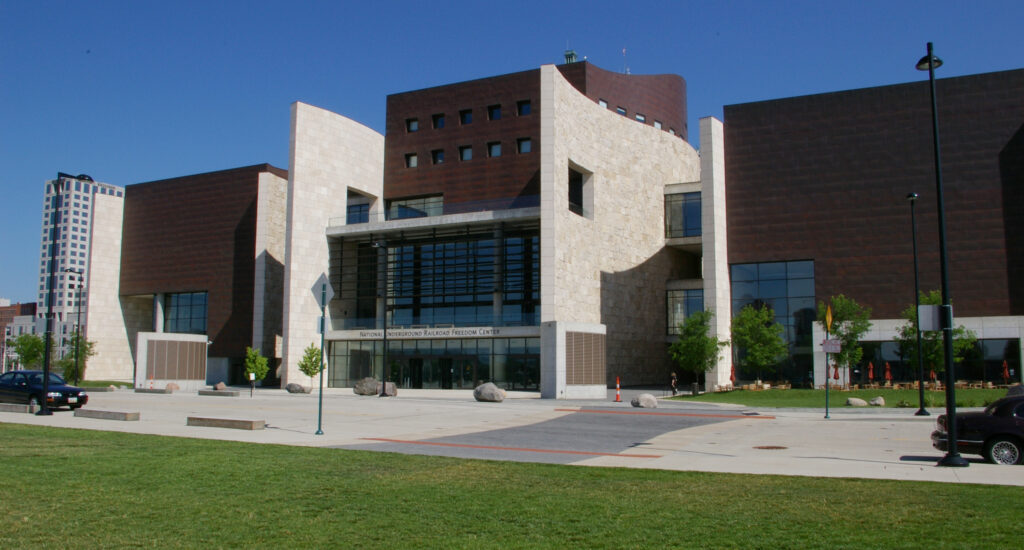
The Freedom Center, located in Cincinnati, Ohio, is a powerful museum dedicated to the history of the Underground Railroad and the ongoing struggle for freedom and human rights. Its mission is to inspire and educate visitors about the fight for freedom and the legacy of the Underground Railroad, while also addressing contemporary issues of social justice and human rights.
Overview
Opened in 2004, the Freedom Center is situated along the Ohio River, a historically significant area as the river was a key geographic barrier for escaping slaves seeking freedom in the northern states and Canada. The museum highlights the courageous efforts of those involved in the Underground Railroad and explores broader themes of freedom and equality.
Exhibits and Key Features
- Underground Railroad Exhibit:
- Interactive Displays: Features immersive exhibits that recreate the experiences of individuals involved in the Underground Railroad. Visitors can engage with interactive displays that illustrate the perilous journeys of escaping slaves and the bravery of those who assisted them.
- Historical Artifacts: Includes artifacts, documents, and personal stories that shed light on the lives of those who risked everything for freedom.
- Contemporary Issues:
- Freedom and Human Rights: The museum connects historical struggles with current issues, addressing topics such as modern-day human trafficking, racial inequality, and global human rights efforts.
- Educational Programs: Offers programs and discussions that link the historical fight for freedom with ongoing social justice challenges, fostering a deeper understanding of the interconnectedness of past and present struggles.
- The Cincinnati Freedom Trail:
- Historic Sites: The museum offers tours of nearby historic sites related to the Underground Railroad, including homes, churches, and other landmarks that played crucial roles in the movement.
- Guided Tours: Provides educational tours that enhance visitors’ understanding of the historical context and significance of these sites.
- Special Exhibitions and Events:
- Rotating Exhibits: Hosts temporary exhibitions that explore various aspects of freedom and human rights, offering fresh perspectives and insights.
- Community Programs: Engages with the local community through events, lectures, and workshops that promote discussion and action on contemporary issues of justice and equality.
Significance
The Freedom Center serves as a crucial institution for preserving the legacy of the Underground Railroad and highlighting the ongoing fight for freedom and equality. By connecting historical narratives with current issues, the museum encourages visitors to reflect on the progress made and the work still needed to achieve justice for all.
Visitor Experience
Visitors to the Freedom Center can explore its rich exhibits, participate in educational programs, and engage with thought-provoking discussions on freedom and human rights. The museum’s interactive approach provides a compelling and educational experience that deepens understanding of both historical and contemporary struggles for justice.
Conclusion
The Freedom Center is an important destination for those interested in the history of the Underground Railroad and the broader themes of freedom and human rights. Through its engaging exhibits and educational programs, the museum honors the legacy of those who fought for freedom and inspires ongoing efforts to address current issues of social justice and equality.
National Underground Railroad Freedom Center (Cincinnati, OH)
The National Underground Railroad Freedom Center, located in Cincinnati, Ohio, is a renowned museum dedicated to the history and legacy of the Underground Railroad and the ongoing quest for freedom and human rights. Situated on the banks of the Ohio River, a significant route for escaping slaves, the Freedom Center plays a pivotal role in preserving and interpreting the history of one of America’s most courageous movements.
Overview
Opened in 2004, the National Underground Railroad Freedom Center explores the complex history of the Underground Railroad, the network of secret routes and safe houses used by enslaved African Americans to escape to freedom in the 19th century. The museum also addresses contemporary issues related to freedom and human rights, making it a dynamic center for learning and advocacy.
Exhibits and Key Features
- The Underground Railroad Exhibit:
- Interactive and Immersive Displays: The museum features detailed exhibits that recreate the experiences of individuals involved in the Underground Railroad. Visitors can explore interactive displays that simulate the journey of escaping slaves and the brave actions of those who helped them.
- Historical Artifacts: Showcases a collection of artifacts, documents, and personal stories that provide insights into the lives and struggles of those seeking freedom and their allies.
- Freedom and Human Rights Exhibits:
- Modern-Day Issues: The museum connects historical narratives with contemporary struggles, including topics such as human trafficking, racial injustice, and global human rights challenges. This approach highlights the ongoing relevance of the fight for freedom and equality.
- Educational Programs: Offers a range of programs, lectures, and workshops that delve into current social justice issues, promoting a deeper understanding of how historical struggles inform today’s human rights efforts.
- Special Exhibitions and Events:
- Rotating Exhibitions: Hosts temporary exhibits that explore various aspects of freedom, resistance, and justice, providing visitors with new perspectives and current insights.
- Community Engagement: Organizes events and programs that engage the public in discussions about freedom, equity, and social justice, fostering community involvement and activism.
- The Freedom Center’s Design:
- Architectural Significance: The museum’s design incorporates symbolic elements, including a reflective pool and a dramatic entryway, which are intended to evoke the themes of freedom and perseverance.
- Historical Context: The location along the Ohio River adds a profound layer of historical context, underscoring the geographic significance of the river as a boundary between freedom and slavery.
Significance
The National Underground Railroad Freedom Center is an essential institution for understanding the history of the Underground Railroad and its impact on the fight for freedom. By bridging historical events with current human rights issues, the museum plays a crucial role in educating the public and advocating for justice and equality.
Visitor Experience
Visitors to the Freedom Center can explore its engaging exhibits, participate in educational programs, and reflect on both historical and contemporary issues of freedom and human rights. The museum’s interactive and immersive approach provides a meaningful and educational experience that deepens appreciation for the ongoing struggle for justice.
Conclusion
The National Underground Railroad Freedom Center is a vital destination for those interested in the history of the Underground Railroad and the broader themes of freedom and human rights. Through its comprehensive exhibits and educational initiatives, the museum honors the legacy of those who fought for freedom and inspires continued efforts to address modern-day challenges related to justice and equality.
Conclusion
Exploring the iconic Civil Rights Movement locations across the United States offers a powerful and transformative experience. These historic sites not only commemorate the struggles and triumphs of those who fought for justice and equality but also serve as enduring reminders of the progress achieved and the ongoing work needed to continue their legacy.
From the poignant exhibits at the National Civil Rights Museum in Memphis to the solemn reflections at the 16th Street Baptist Church in Birmingham, each site provides a unique perspective on the history and impact of the Civil Rights Movement. The Selma to Montgomery National Historic Trail and the Rosa Parks Museum in Montgomery illuminate key moments of resistance and resilience, while the Martin Luther King Jr. National Historical Park in Atlanta offers a comprehensive view of Dr. King’s life and leadership.
The African American Museum in Philadelphia and the Freedom Center in Cincinnati further enrich our understanding by exploring the broader context of African American history and its connections to contemporary issues of freedom and justice. The National Underground Railroad Freedom Center, in particular, highlights the historic struggle for liberation and its relevance to modern human rights efforts.
Visiting these sites not only honors the legacy of civil rights leaders and activists but also provides a profound opportunity for reflection and education. By engaging with this history, visitors can gain a deeper appreciation of the sacrifices made and the progress achieved, while also being inspired to contribute to ongoing efforts for equality and justice. Each location serves as a reminder that the pursuit of civil rights is a continuous journey, one that requires commitment, empathy, and action from each generation.
Recap of the Significance of Visiting These Locations
Visiting key sites of the Civil Rights Movement provides an invaluable opportunity to connect with the rich and complex history of America’s struggle for racial justice. Each location, from the National Civil Rights Museum in Memphis to the 16th Street Baptist Church in Birmingham, plays a crucial role in preserving the stories of those who fought against systemic racism and discrimination. These sites offer firsthand insights into the courage, resilience, and determination of civil rights leaders and activists. They serve as powerful reminders of both the sacrifices made and the progress achieved in the ongoing pursuit of equality and justice.
Encouragement to Explore and Learn About Civil Rights Movement History
Exploring these historic locations is more than a journey through the past; it is an opportunity to engage deeply with the principles and challenges of the Civil Rights Movement. Each site offers unique narratives and educational experiences that bring history to life. By visiting these places, individuals can gain a richer understanding of the struggles faced by those who championed civil rights and the broader social and political context in which they operated. Learning about this pivotal era not only honors the legacy of its heroes but also equips visitors with the knowledge and perspective needed to contribute meaningfully to ongoing discussions about racial equality.
The Role of These Sites in Ongoing Conversations About Racial Equality and Justice
The role of these historic sites extends beyond their function as museums or memorials; they are active participants in contemporary conversations about racial equality and justice. By providing historical context and fostering dialogue, these sites help to illuminate current issues related to race and social justice. They challenge visitors to reflect on the progress made since the Civil Rights Movement and consider the work still required to achieve true equality. Through their educational programs, exhibits, and community engagement, these locations continue to inspire activism, promote understanding, and encourage ongoing efforts to address and rectify racial inequalities in today’s society.
